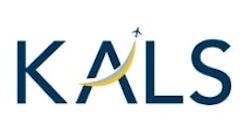The Federal Aviation Administration informed Boeing Tuesday that, when it finally approves resumption of deliveries of the 787 Dreamliner, the agency will perform final inspections on each newly built jet before issuing an airworthiness certificate that approves the plane to carry passengers.
That power to issue those individual airworthiness certificates is routinely delegated to the manufacturer. But the quality problems afflicting the 787 manufacturing process prompted the FAA to withhold that authority from Boeing.
“This will allow the agency to confirm the effectiveness of measures Boeing has undertaken to improve the 787 manufacturing process,” the FAA said in a statement.
The move means airworthiness certificates for the 787 will be issued similarly to those for the 737 MAX, which was grounded in 2019 after two deadly crashes.
Ever since the FAA approved the MAX to return to service in December 2020, following the Boeing fix to the flight control system that led to thecrashes, the FAA has inspected each MAX before delivery.
The problems for the 787 first surfaced in fall 2020 with the discovery of manufacturing defects, including very small gaps at structural joins that were outside Boeing’s tight specifications.
Since October 2020, Boeing has delivered just 14 Dreamliners and 110 of the jets had piled up at the end of 2021, all requiring substantial rework to repair the defects.
Last month, Boeing estimated that the cost of the extended delivery halt had soared to $5.5 billion.
The MAX and the 787 are the two airliners for which Boeing hopes to achieve its highest production and delivery rates. Once the FAA permits 787 deliveries to resume, deliveries of both jets are likely to be slowed by this extra FAA scrutiny.
The FAA said Tuesday it will retain the certificate issuance authority on the 787 until it is confident that:
—Boeing’s quality control and manufacturing processes consistently produce 787s that meet FAA design standards.
—Boeing has a robust plan for the re-work that it must perform on a large volume of new 787s in storage.
—Boeing’s delivery processes are stable.
Responding to the FAA move Tuesday, Boeing in a statement said, “We respect the FAA’s role as our regulator and we will continue to work transparently through their detailed and rigorous processes.”
“We will continue to engage with the FAA to ensure we meet their expectations and all applicable requirements,” the statement added.
No immediate safety issue
Both Boeing and the FAA have determined that the various defects do not pose any immediate safety of flight issue. That’s why the in-service fleet of 787s has not been grounded and are flying passengers daily.
However, many of those previously delivered jets may share the same defects that will have to be repaired eventually. It’s expected that could be accomplished when an airline brings the plane in for a scheduled maintenance check.
Neither Boeing, which will be on the hook to pay for any such repairs, nor the FAA will share the potential the scope of that problem.
The FAA in a statement said that “based on data, the FAA will determine whether similar modifications should be made on 787s already in commercial service.”
Boeing said there are many different possible outcomes and “we won’t speculate” on how many airplanes are involved or what rework will be needed.
Given that Boeing doesn’t seem to know how many planes are potentially affected, it seems that any extra work required on those in-service planes is not yet factored into the recent $5.5 billion cost estimate.
The official letter from the FAA informing Boeing of the new 787 restriction, a copy of which was reviewed by The Seattle Times, was signed by Ian Won, the acting manager for aviation safety in the FAA’s local office that oversees Boeing.
The letter states that before the 787 airworthiness inspections can be delegated back to Boeing, the manufacturer will have to demonstrate that its “compliance, design and production processes” are adequate within the internal Boeing organization that conducts tests and approvals on behalf of the safety agency.
In the past year, Won’s office has issued a series of rulings tightening scrutiny of Boeing’s safety and certification procedures.
In May, Won denied Boeing permission to move forward with a key step in certifying its forthcoming 777X airplane until it provides more data and testing.
In August, another letter from Won said an investigation had found that a substantial number of engineers who do certification work for the FAA are concerned about Boeing management pressuring them to speed the approval process, and that the FAA would therefore conduct an independent survey of all such engineers.
In November, Won informed Boeing of a finding that it had appointed engineers lacking in the required technical expertise to oversee airplane certification work on behalf of the FAA.
At a U.S. Senate hearing that month, Sen. Maria Cantwell, D-Washington, said she was “very appreciative” of Won’s efforts to push Boeing into compliance with FAA safety regulations.
Still, pressure on the FAA continues.
On Friday, leading congressional Democrats asked the Department of Transportation Inspector General to review what they see as the FAA’s failure to hold Boeing accountable for serious lapses that contributed to the two MAX crashes.
A positive view of the FAA’s new 787 ruling is that it might indicate that the federal safety agency is preparing soon to approve deliveries to resume. However, most analysts don’t expect a resumption in the first half of the year.
©2022 The Seattle Times. Visit seattletimes.com. Distributed by Tribune Content Agency, LLC.





